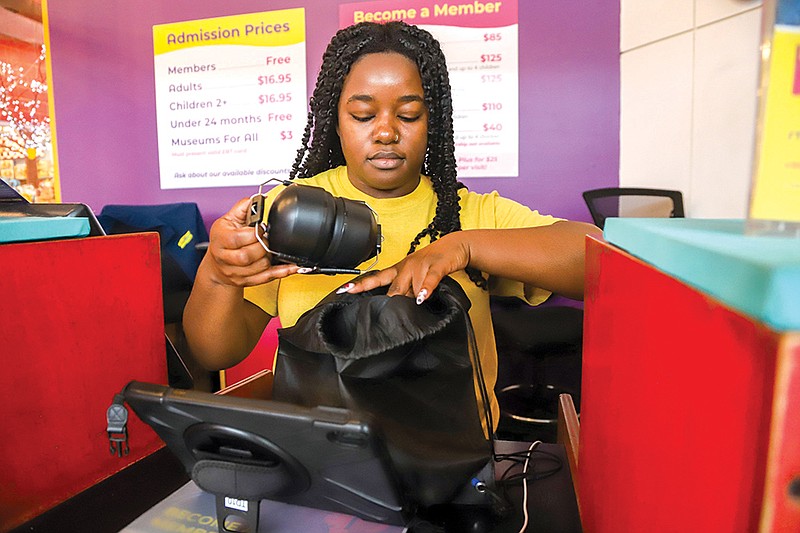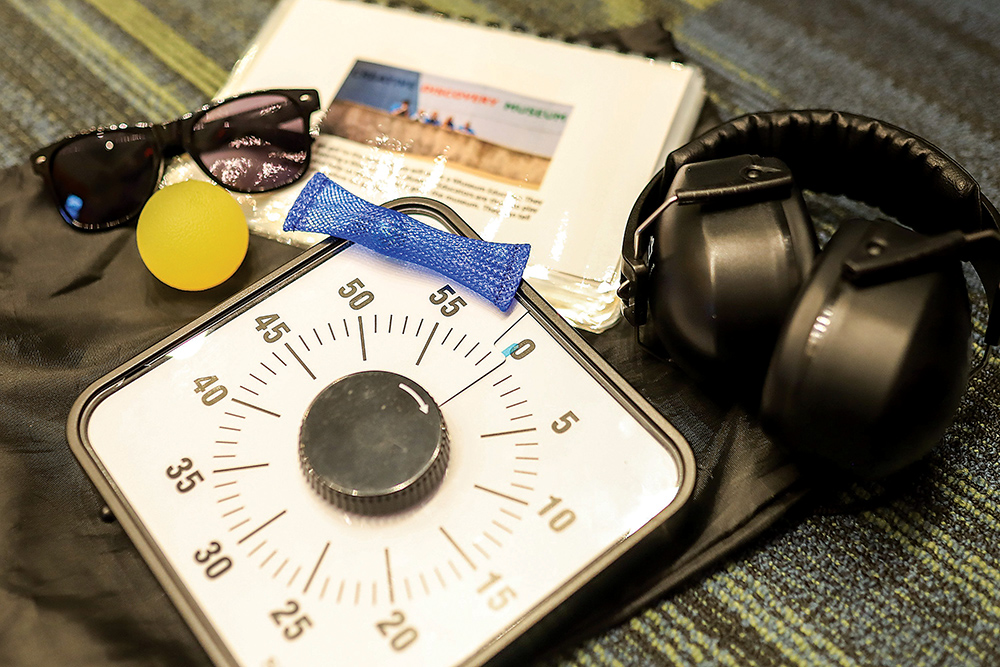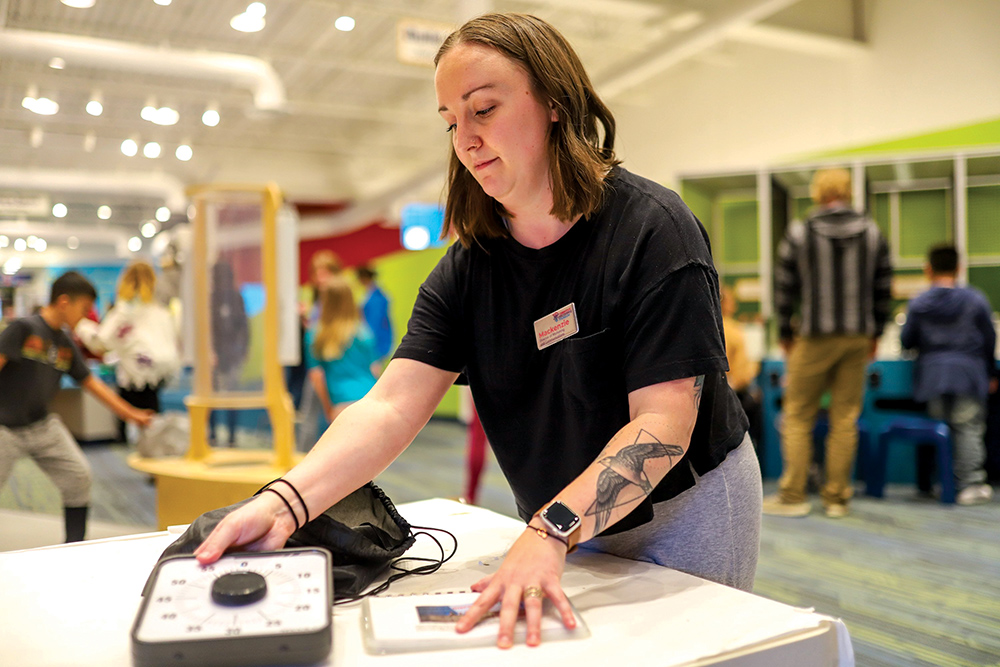Seated in a grandiose room surrounded by exquisite pieces of art, a young woman meticulously explains how to create art with a mixture of paint, glue and torn paper.
Ally Manno, an abstract artist, teaches classes at the Hunter Museum of Art’s Sensory Friendly Studio, which is designed for teens and adults with autism who feel comfortable and less tense in low-stimulated environments. Manno teaches them how to create abstract paintings inspired by the Hunter collection and other works of art.
Athena Buxton, the museum’s manager of outreach and access programs, says the classes are part of an effort to make the museum easier to navigate for people who appreciate art but might struggle in a hectic environment.
“In the middle of the pandemic, the museum started identifying ways we could reach more of Chattanooga’s population and some that we historically haven’t served; a big population being our neurodivergent audience members,” Buxton says.
Manno taught her first class in February of 2021 after being connected to the museum while enrolled in STAGES, an adult transition program at the Chattanooga Autism Center.
“Being able to do something well that I didn’t think I’d do well has impacted me,” says Manno. “I’m so glad I didn’t refuse.”
Sensory-friendly experiences and activities similar to Manno’s classes are on the rise in Chattanooga. Numerous businesses are designing programming to tackle the challenge of overstimulation for neurodiverse customers.
Sensory issues are common in people with autism and are even included in the diagnostic criteria for autism spectrum disorder, according to Autism Speaks, an organization that advocates for people with autism and their families. Many people with autism experience hypersensitivity, causing bright lights and certain sounds, smells, textures and tastes to be overwhelming. This can result in sensory avoidance — trying to get away from stimuli that most people can easily tune out, the website for Autism Speaks states.
Those on the autism spectrum or who have attention deficit hyperactivity disorder (ADHD) often thrive better in low-sensory environments. Research suggests 15-20% of the population is neurodiverse.
Susan Caminez, director of education and community impact at Chattanooga Symphony Orchestra believes music is a right and says everyone should be allotted that right. The orchestra has hosted sensory concerts for children in the past, but the number of musicians has been limited. This February, a full orchestra performed a sensory concert. Caminez expected about 30 people to attend and was happily surprised when the list of attendees soared past 200.
“I’m really excited and pumped that this has become so successful,” she says.
Caminez emphasizes this event catered to all ages and was free of charge. Modifications included ASL interpretation, quiet spaces, wheelchair accessibility, audio description, social narratives, light indicators for music, adult changing tables in restrooms and allowing deaf individuals to touch the stage for sensation during the concert.
“I want to focus on all ages and making music accessible to everyone,” she says.
Also catered to young people, at the Creative Discovery Museum, individuals can ask for a “sensory bag” at guest relations. The bags include noise-canceling headphones, a visual timer, a pair of sunglasses and fidget toys. The museum also hosts Sensory Night. This event is hosted the first Thursday of every month and is free to the public.
Creative Discovery has been partnering with Vanderbilt’s All Access Inclusion Network (AAIN) since 2017. The network promotes inclusion, awareness and accessibility to people with autism spectrum disorder and other intellectual and developmental disabilities.
A longtime patron of the museum, Sara Southard, has a daughter named Abby who is autistic. Southard told a story of how Abby had a sensory overload meltdown earlier this year while exploring the museum. Sara hurried to get a sensory bag, and the behavior change was significant.
“A simple pair of noise-reducing earmuffs made all the difference in the world,” she says. “I put the headphones on Abby, and she grinned, took a deep breath, and I whispered, ‘so brave.’”
Caminez says feedback from the community is crucial for coordinating inclusive programs and creating sensory-friendly spaces. With awareness for neurodivergent individuals increasing, businesses and organizations continue to evolve.
More sensory-friendly experiences
— Hunter Museum of Art Sensory Friendly Studio, offering 3-4 classes annually. $20 per ticket; registration required. All ages. huntermuseum.org
—Chattanooga Symphony Orchestra sensory concerts. Free of charge; registration required. All ages. chattanoogasymphony.org
— Little Debbie Park at Commons in Ooltewah. Playground currently under construction; will include a sensory dome and sensory wave seat. collegedaletn.gov
— Creative Discovery Museum Sensory Night, hosted the first Thursday of every month. Free to the public. cdmfun.org
— Playdatez Indoor Playground hosts Sensory Wednesday 10 a.m. to noon. playdatezchatt.com
— Urban Air Trampoline Adventure Park, sensory-friendly play the first Sunday of every month. urbanair.com


